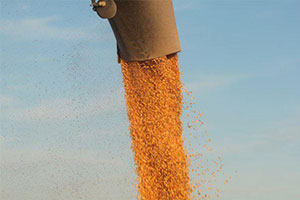South Africa approves biotech corn events, opening door for U.S.
Lagging biotech approvals have long hindered trade with South Africa.
December 9, 2016

South Africa’s government announced last week it is eliminating import restrictions on some biotech corn products, likely opening it for additional imports of U.S. corn.
The list of products, or events as they are described by the scientific community, announced by the country’s Department of Agriculture, Forestry and Fisheries (DAFF) that were previously ineligible for import includes several grown by U.S. corn producers either in single-event varieties or stacked varieties.
They include:
MON 87460 x NK603
3272 x Bt11 x MIR604 x GA21
TC1507 x 59122 x MON810 x MIR604 x NK603
TC1507 x 59122 x MON810 x NK603
TC1507 x MIR604 x NK603
TC1507 x MON810 x MIR162 x NK603
MON87460 maize event

Weather conditions resulting from El Nino caused a short crop and necessitated imports of both yellow and white corn. Source: USGC
According to U.S. Grains Council (USGC), these events have all been found safe by other global regulators, including in the U.S., but had faced process delays in South Africa.
The effort to achieve their approval ramped up late last year after a USGC mission to South Africa uncovered a significant near-term opening for U.S. feed grain imports following a severe drought.
Under normal conditions, South Africa is a net exporter of corn, shipping approximately 1 million metric tons (39.4 million bushels) each year. However, weather conditions resulting from El Nino caused a short crop and necessitated imports of both yellow and white corn. White corn is a staple in the diets of South Africans and those in neighboring countries to whom they export in most years.
Unfortunately, USGC said that lagging biotech approvals in South Africa have long hindered trade with the U.S., leading South Africa to typically source yellow corn from Argentina and white corn from Mexico.
While some U.S. white corn not produced with biotechnology was shipped to South Africa early in 2016, the majority of imports came from Mexico, which in turn required Mexico to import more yellow corn from the United States to cover the white maize disappearance.
USGC has been diligent in its efforts to help ease trade roadblocks and promote U.S. feed grains in South Africa since discovering the depth of the issue.
Members first met with South African industry and government officials on this topic as part of an officers’ mission in December 2015. USGC members, staff and consultants also participated in an industry and government roundtable on the issue, presenting on white corn global supply and demand issues as well as solutions to enable U.S. corn shipments. Following that meeting, USGC representatives continued working with industry partners and DAFF towards a suitable resolution of this trade issue.
The U.S. is now in a better position to tap into an estimated market potential of approximately 400,000 metric tons (15.7 million bushels) of yellow maize and 300,000 tons (11.8 million bushels) of white maize anticipated through April 2017.
As this market opens up, USGC said its consultants locally and staff in the region and in the U.S. will continue to work closely with our South African partners to build a mutually beneficial trade partnership.
You May Also Like



